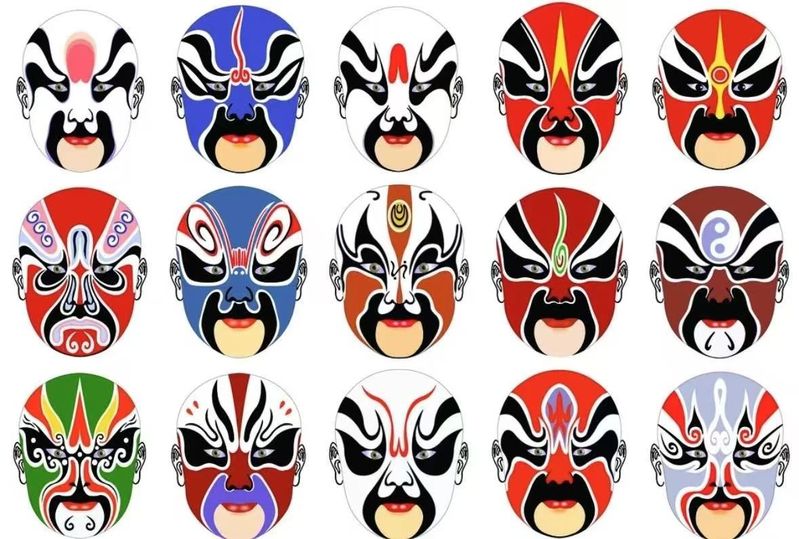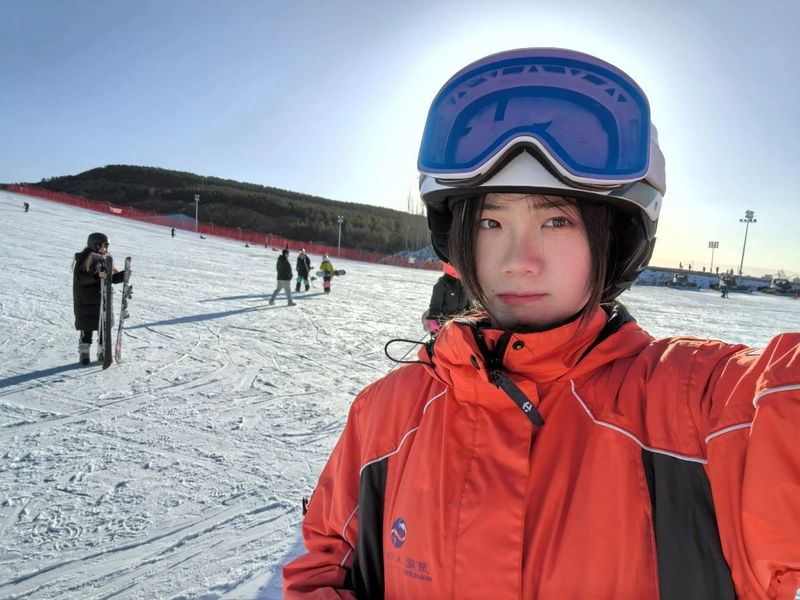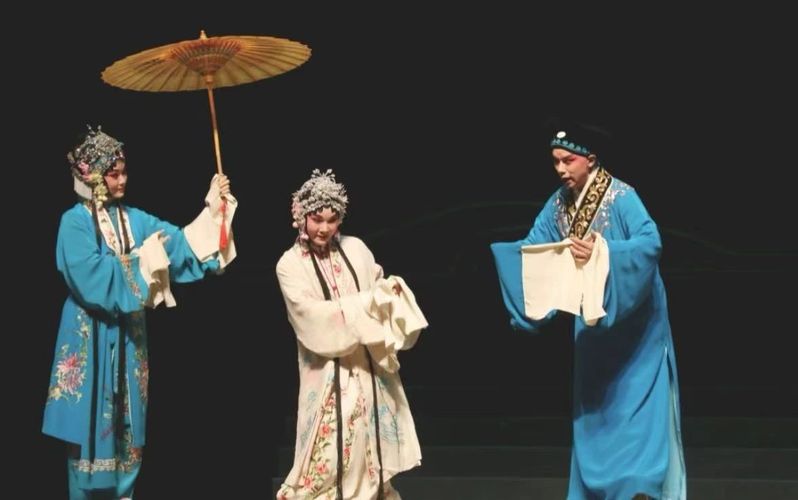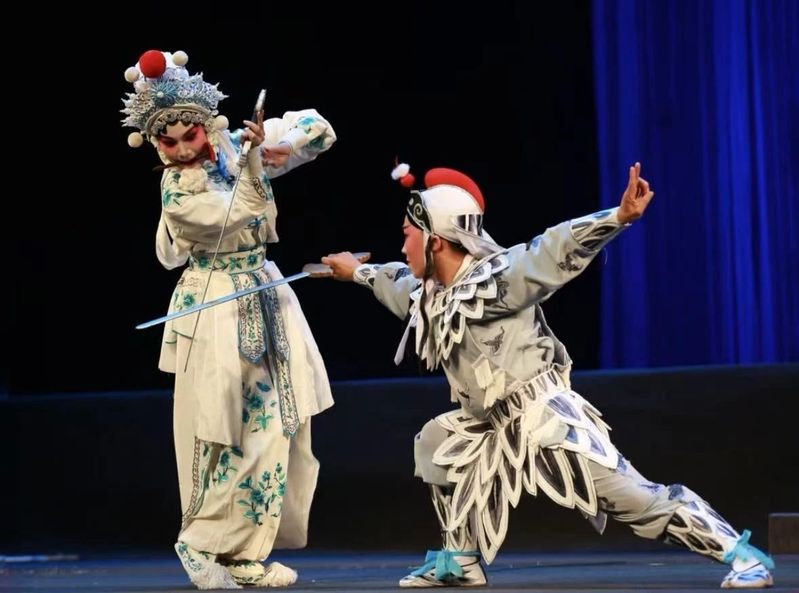豫剧,中国五大戏曲剧种之一,以河南方言为基础,吸收了秦腔、河南花鼓戏等地方戏曲的特点,并与其他戏曲剧种相互影响、融合,在上世纪40年代后成为中国戏曲舞台的主要剧种之一。
本期让我们跟随翻译2401班徐嘉雯同学的脚步,一起了解豫剧的百年传承与独特魅力,听听那些藏在唱腔里的故事。

蒲公“英”说书人
大家好,我是来自翻译2401班的徐嘉雯。我喜欢游泳、追综艺,也热衷于探索未知,爱用镜头和文字记录生活里的美好瞬间。

原文
Yu Opera is one of China's five major opera genres, and the largest regional opera genre in the country. It is primarily popular in Henan Province, Hebei Province, and Shandong Province, and has spread to become a traditional theatrical form across China. It is also listedas a National intangible Cultural Heritage of China.
Yu Opera, along with Peking Opera and Yue Opera, is regarded as one of the triumvirate of Chinese opera. With a history spanning over a century.it had already established itself as a major influential opera form in Henan Province by the Qianlong era of the Qing Dynasty.During its evolution, Henan Opera absorbed artistic elements from diverse sources, including Kunqu, Chuiqiang, Pihuang, and other Bangziqiang opera styles. It further integrated local folk music, storytelling traditions, and vernacular ballads from Henan, forging a distinctive style marked by simplicity, richness, subtlety, and a strong rustic charm.
Long influenced by Central Plains culture, particularly the regional culture of the Yellow River Basin, Yu Opera has developed a distinctive Henan regional style in its repertoire, stage performance, character development, narrative techniques, and musical and vocal styles, imbued with pronounced regional cultural characteristics.
Yu Opera, with its diversity of vocal styles, flexibility in performance, and richness of themes, has become a vibrant embodiment of Central Plains culture. While preserving the ritualistic beauty of traditional theater, it continuously incorporates modern elements, resonating with the spirit of the times. It is not only a cultural symbol of Henan Province but also a shining jewel in the treasury of Chinese opera art.

译文
豫剧,是中国五大戏曲剧种之一、中国第一大地方剧种,是主要流行于河南省、河北、山东,流传中国各地的传统戏剧,国家级非物质文化遗产之一。
豫剧与京剧、越剧同为中国戏曲三鼎甲,传承已有上百年的历史,早在清代乾隆年间,已成为河南很有影响的戏曲剧种。豫剧在生成和发展时期,汲取了昆腔、吹腔、皮簧及其他梆子声腔剧种的艺术因素,同时广泛吸收河南民间流行的音乐、曲艺说唱和俗曲小令,形成了朴直淳厚、丰富细腻、富于乡土气息的剧种特色。豫剧被西方人称赞是“东方咏叹调”“中国歌剧”等。
豫剧艺术长期受中原文化特别是黄河流域地方文化的影响,它在演出剧目、舞台表演、人物塑造、表述方式、音乐唱腔等方面都形成了独特的河南地方风格,带有浓郁的地域文化色彩。
豫剧以唱腔的多样性、表演的灵活性、题材的丰富性,成为中原文化的生动载体。它既保留了传统戏曲的程式之美,又不断吸收现代元素,始终与时代同频共振,不仅是河南的文化象征,也是中华戏曲艺术中的一颗璀璨宝石。

(本文摘录自用英语讲中国故事2025-06-03)
四六级关键词,接住啦
genre n.类型,流派
primarily adv.主要地,首要地
triumvirate n.三人领导小组,三巨头
span v.跨越,持续
nfluential adj.有影响力的
absorb v.吸收
四六级暴击,小试牛刀
1.According to the passage, Yu Opera is primarily popular in which of the following regions?
A) Jiangsu, Zhejiang, and Shanghai
B) Guangdong, Guangxi, and Fujian
C) Henan, Hebei, and Shandong
D) Sichuan, Chongqing, and Yunnan
Answer 1: C) Henan, Hebei, and Shandong
解析:文章第一段明确指出:豫剧主要流行于河南省、河北省、山东省...。因此,正确选项是C。其他选项提到的省份并非豫剧的核心流行区域。
2.During which historical period had Yu Opera already become a major influential opera form in Henan Province?
A) The Ming Dynasty
B) The Qianlong era of the Qing Dynasty
C) The Republican Era
D) The Tang Dynasty
Answer 2: B) The Qianlong era of the Qing Dynasty
解析:文章第二段明确提到:...it had already established itself as a major influential opera form in Henan Province by the Qianlong era of the Qing Dynasty.(...在清朝乾隆年间,它已成为河南省主要且有影响力的戏曲形式。)。因此,正确选项是 B (清朝乾隆时期)。其他历史时期未被提及为豫剧在河南确立重要地位的关键时期。
3.Which artistic elements did Yu Opera absorb during its evolution, as mentioned in the passage?
A) Kunqu, Chuiqiang, Pihuang, and other Bangziqiang styles
B) Peking Opera, Yue Opera, and Huangmei Opera
C) Western classical music and ballet
D) Indian classical dance and Japanese Noh theater
Answer 3: A) Kunqu, Chuiqiang, Pihuang, and other Bangziqiang styles
解析:文章第二段详细说明:在演变过程中,豫剧吸收了来自不同来源的艺术元素,包括昆曲、吹腔、皮黄以及其他梆子腔戏曲风格。 (原文:During its evolution, Henan Opera absorbed artistic elements from diverse sources, including Kunqu, Chuiqiang, Pihuang, and other Bangziqiang opera styles.)。因此,正确选项是 A。选项 B 中的其他剧种(京剧、越剧、黄梅戏)未被提及为豫剧吸收的来源;选项 C 和 D 提到的西方或外国艺术形式在文中未涉及。




